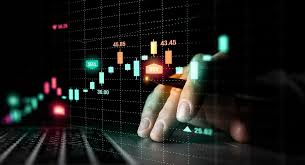
Understanding the Dynamics of Trading Crypto Volume
In the fast-paced world of cryptocurrencies, understanding the intricacies of trading crypto volume is paramount for any serious investor. Trading volume refers to the total quantity of a particular asset that has been traded within a specified timeframe. Analyzing this aspect can provide invaluable insights into market behavior and potential price movements. To illustrate the importance of trading volume, consider this detailed exploration: Trading Crypto Volume https://kitsunez.pages.dev/12/bFodCqcOiA.
At its core, trading crypto volume helps gauge the activity and liquidity of cryptocurrency markets. High volumes often indicate a robust trading environment where assets can be bought and sold quickly without significantly impacting their price. Conversely, low volume can suggest stagnation or uncertainty within the market, leading to heightened volatility.
The Basics of Trading Volume
Trading volume is a critical fundamental metric that traders should always consider. It is calculated as the number of units of cryptocurrency that change hands during a specific period. For instance, if 1,000 Bitcoin are traded in a day, this number constitutes that day’s trading volume. The metric is essential because it influences price stability, liquidity, and market trend.
Many trading platforms display a volume chart alongside price charts, allowing traders to visualize changes in volume against price movements. A surge in trading volume often precedes significant price shifts—either upward or downward—making volume analysis a crucial tool for traders seeking to make informed decisions.
Why Is Trading Volume Important?
Trading volume serves multiple purposes in the world of cryptocurrencies:
- Liquidity: Higher trading volumes typically indicate better liquidity, which means orders can be executed more efficiently and with less impact on the price. This is particularly critical for larger traders who might otherwise influence market prices with their trades.
-
Price Momentum: An increase in volume often correlates with a price trend. Traders have noticed that price spikes usually accompany high volume, making volume a leading indicator of potential price direction.

- Market Sentiment: Volume can offer insights into market sentiment. For instance, if prices rise alongside increased volume, it typically implies strong buyer interest. In contrast, if prices rise but volume decreases, it may indicate a lack of conviction among buyers.
- Trend Confirmation: Volume can confirm trends. For example, during an uptrend, if prices rise and volume increases, it strengthens the validity of the uptrend. On the flip side, if prices rise but volume decreases, it may suggest a potential reversal.
How to Analyze Trading Volume
While it is easy to understand the concept of trading volume, analyzing it effectively requires a strategic approach. Here are some key methods and indicators that traders can use:
1. Volume Indicators
Several technical indicators analyze volume, including the On-Balance Volume (OBV), Chaikin Money Flow (CMF), and the Accumulation/Distribution Line. Each of these indicators combines volume with price data to help traders determine trading activity’s strength and direction.
2. Volume Patterns
Traders often look for specific volume patterns that can indicate market behavior. For instance, a volume spike during an uptrend could signal the continuation of that trend, while a volume drop during a downtrend might suggest weakening selling pressure.
3. Comparing Volume Across Markets
Another analytical approach involves comparing trading volumes across different cryptocurrency exchanges or against other cryptocurrencies. This can highlight discrepancies in market activity and provide insights into potential price movements.
Challenges and Considerations
While trading volume is a valuable metric, it is not without its challenges. For example, volume can be manipulated through wash trading, where traders buy and sell to artificially inflate volumes. Such practices can mislead genuine investors and distort market perception.
Furthermore, relying solely on volume without considering other factors—such as market news, technical indicators, and economic conditions—can lead to misguided decisions. Therefore, it is crucial for traders to adopt a multifaceted approach when making trading decisions, integrally linking volume analytics with broader market analysis.
Conclusion
In conclusion, trading crypto volume is a vital component of successful trading strategies in the cryptocurrency market. Understanding its implications, analyzing it effectively, and being mindful of its limitations can empower traders to make informed decisions. As the cryptocurrency market continues to evolve, mastering the dynamics of trading volume will remain essential for traders at all levels.
With the growing complexity of digital assets and trading environments, continuous education and the implementation of sophisticated analytical techniques will remain key to navigating the ever-changing landscape of cryptocurrency trading. By paying close attention to trading volume, traders can enhance their strategies, optimize their investments, and better position themselves for success in this dynamic marketplace.
